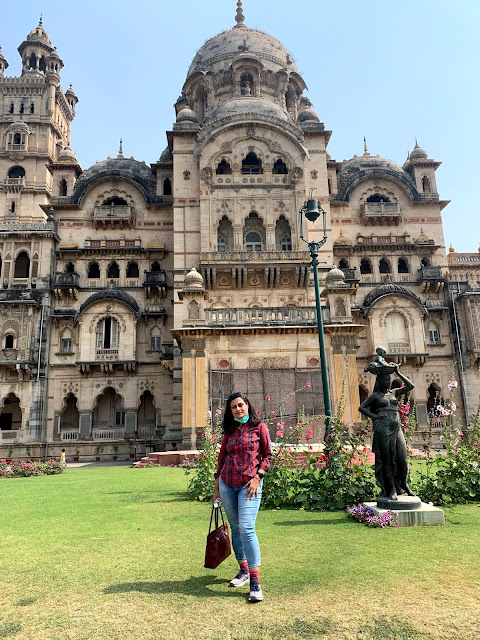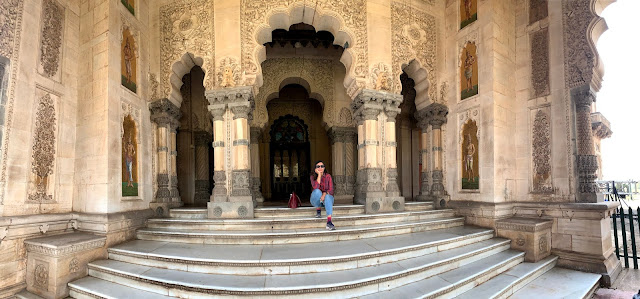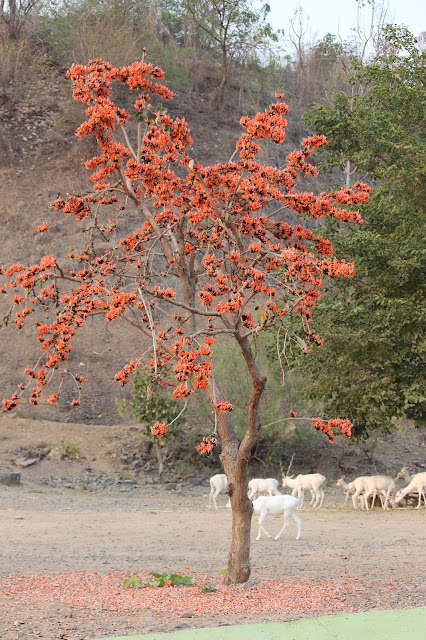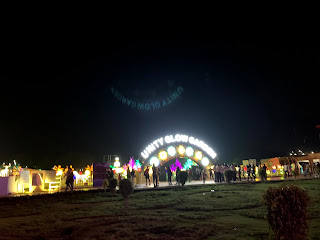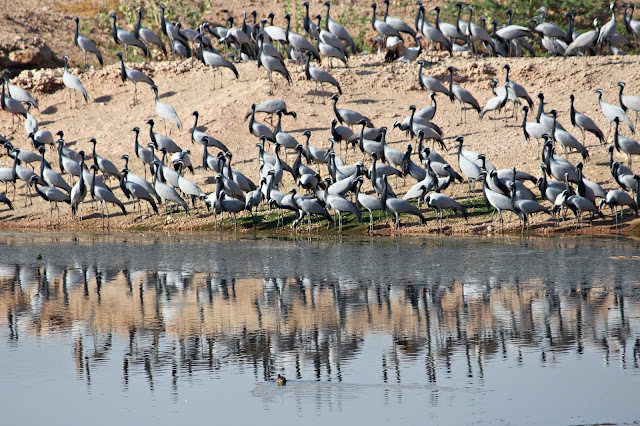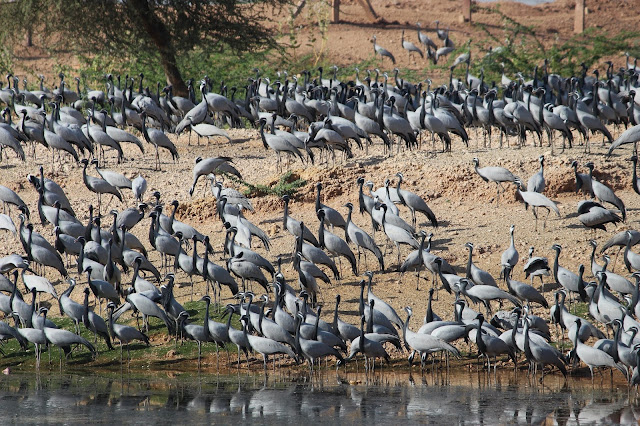Villages after villages blur past as we make way to the temple of the Kuldevi of the Bhati Rajputs - Shri Bhadariya Rai Mata Ji. The temple sees thousands of visitors each day, all the year-round. Newly wedded couples who come to seek blessings from the Goddess for a blissful matrimonial life can be seen in large numbers. In the middle of the Thar, this temple and its surroundings are truly an Oasis of relief, respite, faith, love and knowledge.
 |
| A newly wedded couple seeking the blessings of Shri Bhadariya Rai Mata ji |
Knowledge- We are talking about a library that houses more than 900,000 books, and is sixteen feet under the ground, and is the largest library in Asia! Owing to its design and construction, with no air-conditioning inside, the library remains significantly cooler than the environs outside. The holding capacity of the library is an astounding 5000 people at the same time!
Brief History
Sant Shri Harivansh Singh Nirmal, fondly known as Nirmal Baba or Bhadariya Maharaj, came to this small village in Jaisalmer district of Rajasthan some seven-eight decades ago. Little is known about him and his life prior to his coming to Bhadariya Ji. He was an avid reader and was fond of collecting books. He believed that the greatest God / Goddess of all is “Knowledge” and with that thought in mind, he envisioned a library that would house every printed book on every research-worthy subject. And thus was born the idea of creating this library.
Another notable contribution of Nirmal Baba is the Gaushala (cowshed) at Bhadariya Ji. Babaji, a believer of Gau-seva would leave no stone unturned to save the indigenous Indian Cow from the abattoirs and butcheries across the then porous international border. He even bought these cows from the tribals who felt they could make more money by selling the cows to those who found a dead cow more useful than a living one. Thus came the gaushala into existence. From those few cows now the Gaushala is spread over 1 lakh bighas (1 bigha in Rajasthan equals 27,225 sq ft) of land. Run on the donations received from devotees, the Gaushala tends to more than 45,000 bovines. And yes, this is one of the largest Gaushalas in the country.
The library
Spread over acres and acres of land, oops(!) correction, spread under acres and acres of land, the access to the library is through a humble but wide stairway. Once inside, you are greeted by rows and rows of neatly arranged books in glass-covered cabinets, 562 to be precise. The shelves reach up to the ceiling, with the top ones still empty and awaiting the arrival of more books. Maharaj ji’s ambition was to have a copy of every printed book on every subject here in this library. The library is a treasure trove for book lovers, bibliophiles and research scholars. Rare manuscripts and scrolls are also painstakingly preserved and given a place of their own. The treasure here holds books on varied subjects including literature in many languages, science, history, politics, world religions (literature and religious books of 7 out of a total of 11 major religions of the world), geography, philosophy and even dictionaries and atlases. One can even find the original unedited copies of the holy books here. The ones we buy from the market are usually translations and concise copies.
There is a restoration room as well, where the book-doctors mend and tape the tatters and tears if any and re-write where an ageing book requires a little assistance with the blurred words. They come in old and worn-out and leave fresh, crisp and securely bound :)
Comfortable and easy to navigate and explore, the library as I mentioned earlier, remains cool all through the year. Long corridors have huge mirror walls at the ends, giving an illusion of them being infinitely never-ending.
How to reach
By road, it takes barely an hour and a half to reach Bhadariya from Jaisalmer (79 km). Jodhpur too isn’t very far, at just around 220 km (close to 3 hours). And both these cities are well connected by air, rail and roads.
Once here
We began with Bhadariya Rai Mata Ji’s Darshan. Next, we visited the temple dedicated to Nirmal Baba and the museum that gives a glimpse into his personal life through carefully preserved articles and belongings of Maharaj Ji. Besides his personal articles of daily use, the museum also has his collection of currency (coins and currency notes) and stamps.
Done with the temples and the museum, we returned to the office of the trust near the main entrance. A lassi Prasad at the office is a must-have. Keep the appetite for a tall glass! Having given permission by the office, we were escorted by one of the attendants into the library. We spent a leisurely time there scanning through shelves upon shelves of the invaluable treasure of knowledge. Our guide shared anecdotes and further information about Maharaj Ji with us while patiently taking us around the library.
When planning a visit
The library is yet to be formally inaugurated and is also awaiting the addition of very many books hence visiting without prior permission might turn out to be a futile effort. It is suggested that you reach out to the temple trust under whose management the library falls, and seek an appointment before taking that journey through the picturesque golden landscapes of rural Rajasthan. You may either drop an email to them or seek an appointment telephonically. The library sees an average of 60,000 scholars from around the globe each year.
A bibliophile’s paradise, a book lover’s utopia, and to all the others a wonder to be visited. Include a quick trip to Bhadariya Ji during your next quest of Rajasthan, and be mesmerised by another “Jaane Kya Dikh Jaaye” wonder!





